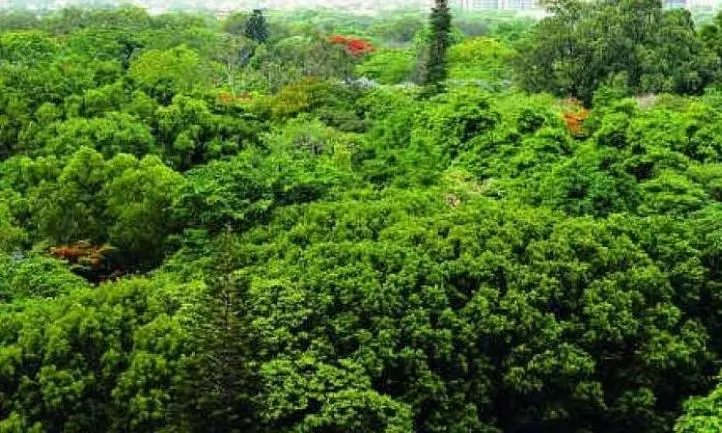More Than a Third of State's Forest Prone to Fires: Study

Hyderabad: More than a third of the state's forests are prone to fires, and forest fires also occur near a third of forest fringe villages, an analysis of data over the past 15 years has found.
Also, a fourth of all the 10,633 forest roads, are areas where such fires occur, the study found.
This year, with soil moisture at a low and with most natural water bodies drying up on account of summer, and poor rains in some districts that are home to forests, the threat of forest fires is greater than in the past, according to forest officials.
"Almost all fires are ground fires and are manmade with many of them deliberate," said principal chief conservator of forests (PCCF) R.M. Dobriyal.
"Most of these fires are not very big. We have so far managed to contain them before they could spread. But it is very possible that a very large uncontrollable fire could be round the corner," he said.
On March 29, there were reports of 178 incidents of forest fires from across the state. The department requires around Rs.50 crore for augmenting the fire-fighting equipment, and related expenses like fuel to operate blowers and for vehicles carrying fire teams into the forest, officials said.
"The analysis of 15 years of fire incidents data has identified that of the 9,790 forest compartments, 1,106 are high fire prone, while another 1,621 compartments have been classified as medium fire prone. Fires are commonplace in forests along 1,279 habitations of the 4,252 forest fringe villages. Even forest roads are sites for fires," deputy conservator of forests S. Madhava Rao, from the management information systems and forest fire control operations wing in the department, said.
Most fires along roads are caused by carelessly thrown cigarette or bidi stubs, while some are a result of people starting fires for cooking, or pilgrims on foot lighting fires to cook food or ward away wild animals.
One of the causes of fires is setting fire to patches of forest by bidi leaf collectors, who are encouraged by their contractors to do so. Once the fire eats up these trees, new growth ensues and the fresh leaves are the ones that are most sought after. These fires are set towards the end of March and well into April before the leaf collection season begins in May, Dobriyal said.

